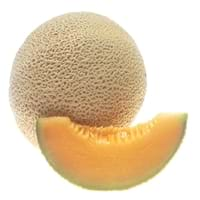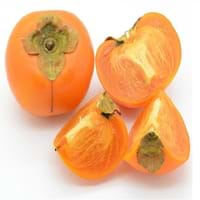Health Benefits
Cancer prevention, Heart care, Improves eye vision, Prevents diabetes, Reduces stress
Cancer prevention, Heart care, Heat stroke treatment, Improves eye vision, Weight loss properties
General Benefits
Boosts immune system, Cures cough, Cures fever, Digestive aid, Eye care, Helps in weight loss
Anti-inflammatory properties, Boosts immune system, Cures cough, Digestive aid, Fights against infections, Improves blood circulation
Skin Benefits
Anti-aging benefits, Hydrates skin, Skin rejuvenation, Treatment of skin diseases
Anti-aging benefits, Brightens and lightens complexion, Reduces wrinkles
Hair Benefits
Good conditioner, Prevents hair loss, Protects hair
Promotes longer and healthier hair, Protects hair
Allergy Symptoms
Abdominal pains, Anaphylaxis, Breathing difficulty, Diarrhea, Dizziness, Hives, Itching of mouth, Nasal congestion, Nausea, Vomiting
Abdominal pains, Anaphylaxis, Inflammation
Side Effects
Allergic reaction, Bloating, Indigestion
Diarrhoea, Might affect blood pressure level
Best Time to Eat
As a snack in the late afternoon, Don't consume at night and before bed, Eat the fresh ones, avoid mixing with any other foods, don't eat after meal., Morning time (before lunch)
Along with meal, As a snack in the late afternoon, Don't consume at night and before bed, Morning time (before lunch)
Vitamin B5 (Pantothenic Acid)
Not Available
Vitamin C (Ascorbic Acid)
Vitamin K (Phyllochinone)
Calories in Fresh Fruit with Peel
Not Available
Calories in Fresh Fruit without Peel
Not Available
Calories in Frozen Form
Not Available
Calories in Canned Form
Not Available
Not Available
Type
Melon
Berry, Tree fruit
Season
Summer
Autumn, Winter
Varieties
Hales Best Jumbo, Sweet 'N Early Hybrid, Hearts of Gold, Ambrosia, Athena, Honey Bun Hybrid, Fastbreak and Superstar
Fuyu, Jiro, Gosho, Suruga, Hiratanenashi, Hachiya, Aizumishirazu, Yotsumizo, Yokono, Costata, Ormond and Tamopan
Color
Orange
Orange, Red, Yellow
Inside Color
Creamy Orange
Orange
Taste
Juicy, Musky, Sweet
Sweet
Origin
Africa, India
Burma, China, India, Japan
Soil Type
Sandy
Sandy loam, Well-drained
Climatic Conditions
Dry, Hot
Can tolerate wide range of climates
Facts about
- Cantaloupe is known as rock-melon in some parts of the world.
- Christopher columbus first introduced cantaloupes to north america in 1494.
- The name 'Cantaloupe' as it is cultivated in papal gardens of cantaloupes, Italy.
- Unripe persimmons contain lots of tannin which is used to brew sake & to preserve wood in Japan.
- A small non-edible fruit of persimmon tree is crushed with water, the solution is painted on paper & used to repel mosquitoes.
Spirits
Yes
Not Available
Cocktails
Yes
Not Available
Other Countries
Iran, Romania, Turkey, United States of America
Azerbaijan, Brazil, Israel, Italy, Japan, Pakistan
Top Importer
United States of America
United States of America
Botanical Name
Cucumis melo var. cantalupensis
Diospyros kaki
Synonym
Cucumis melo var. reticulatus
Not Available
Subkingdom
Tracheobionta
Tracheobionta
Division
Magnoliophyta
Magnoliophyta
Class
Magnoliopsida
Magnoliopsida
Subclass
Dillenhidae
Dillenhidae
Order
Cucurbitales
Ericales
Family
Cucurbitaceae
Ebenaceae
Generic Group
Gourd
Not Available
Difference Between Cantaloupe and Japanese Persimmon
We might think that Cantaloupe and Japanese Persimmon are similar with respect to nutritional value and health benefits. But the nutrient content of both fruits is different. Cantaloupe and Japanese Persimmon Facts such as their taste, shape, color, and size are also distinct. The difference between Cantaloupe and Japanese Persimmon is explained here.
The amount of calories in 100 gm of fresh Cantaloupe and Japanese Persimmon with peel is Not Available and 70.00 kcal and the amount of calories without peel is 34.00 kcal and Not Available respectively. Thus, Cantaloupe and Japanese Persimmon belong to Low Calorie Fruits and Low Calorie Fruits category.These fruits might or might not differ with respect to their scientific classification. The order of Cantaloupe and Japanese Persimmon is Cucurbitales and Ericales respectively. Cantaloupe belongs to Cucurbitaceae family and Japanese Persimmon belongs to Ebenaceae family. Cantaloupe belongs to Cucumis genus of C. melo species and Japanese Persimmon belongs to Diospyros genus of D. kaki species. Beings plants, both fruits belong to Plantae Kingdom.









